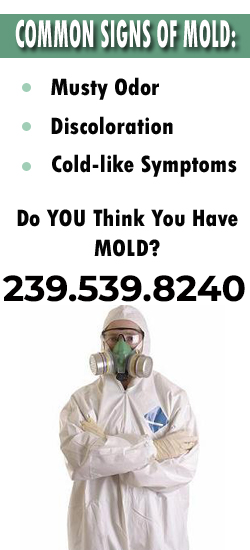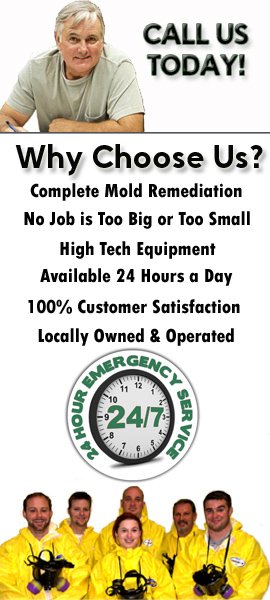Is it true that mold is just a harmless, ugly nuisance that you can simply scrub away with a bit of elbow grease and bleach? We’re here to tell you, it’s not quite as straightforward as that.
In reality, mold is a serious issue that requires professional attention – the process is known as mold remediation. Let’s unpack the complexities of this critical procedure, revealing why it’s an essential part of maintaining a healthy living or working environment.
Understanding Mold and Its Dangers
Before diving into the remediation process, let’s first understand the often-underestimated enemy – mold, and the potential dangers it presents.
Mold is a type of fungus that thrives in damp environments and reproduces by releasing spores into the air. These spores can survive even in harsh conditions, waiting for the right environment to start growing.
Despite its seemingly harmless presence, mold can pose severe health risks, especially for people with weak immune systems, allergies, or respiratory conditions. Exposure to mold can cause a range of health problems, from minor irritations like coughing and wheezing to more severe issues such as asthma attacks, lung infections, and even neurological problems in extreme cases.
Mold can also damage the structures it grows on. If left unchecked, it can deteriorate walls, floors, and ceilings, leading to costly repairs and potentially dangerous situations. It’s not an enemy we can simply ignore; mold’s resilience and potential for harm necessitate immediate and efficient action.
In our homes, we often provide the perfect conditions for mold growth without realizing it: dampness from leaks, high humidity levels, and warm temperatures. It’s essential to keep an eye out for signs of mold, such as discoloration on walls, a musty smell, or increased allergy symptoms.
Understanding mold and its dangers is the first step in the remediation process. It’s not just about making our homes look clean; it’s about ensuring our homes are safe and healthy environments. Now that we’ve identified the enemy, we’re better equipped to tackle it.
Initial Mold Assessment Steps
Armed with an understanding of the enemy, we’re ready to kick-start the mold remediation process with the initial mold assessment steps. This process, as integral as it’s meticulous, is all about identifying the presence, location, and extent of mold growth in a given space.
Our first step is to conduct a thorough inspection of the property. We’ll use advanced tools like moisture meters and infrared cameras to detect hidden mold and water damage. It’s crucial to identify the source of moisture causing the mold growth, as it’s the only way to prevent future infestations.
Next, we’ll collect samples, if necessary, for lab analysis. This will help us identify the type of mold we’re dealing with, and plan the most effective remediation strategy. We’re not just looking for visible mold – hidden mold is often more dangerous and harder to detect.
Once we’ve gathered enough information, we’ll document our findings in a detailed report. This report will include photos, descriptions of the affected areas, the extent of the damage, and our recommendations for remediation. It’s our blueprint for the next steps in the process.
Techniques for Effective Mold Removal
Now, let’s delve into the various techniques we employ for effective mold removal. Our methods are designed to not only rid your space of mold but also prevent its return.
Initially, we physically remove visible mold. This could involve scrubbing hard surfaces with detergents and vacuuming with HEPA filters, which are designed to capture tiny mold spores. For mold on porous surfaces like drywall and carpeting, we may need to remove and replace the affected materials.
Second, we use air scrubbers and air exchangers to remove mold spores from the air. Air scrubbers work by drawing in air, passing it through filters to remove contaminants, and then discharging the clean air back into the space. Meanwhile, air exchangers replace the moldy indoor air with fresh outdoor air.
Third, we disinfect the entire area using antimicrobial treatments. These can kill mold spores on surfaces and in the air. We’re not just focused on visible mold; we’re out to get every last spore!
Lastly, we encapsulate any remaining mold that can’t be removed. This involves applying a mold-resistant coating that prevents mold from growing or spreading. Encapsulation is typically used as a last resort when mold can’t be physically removed.
We’re thorough, ensuring every step of the process is done right. We don’t just want to clean up your mold problem; we want to help you keep it from coming back. Remember, effective mold removal is about more than just cleaning; it’s about prevention, too.
Preventive Measures Against Future Growth
To keep mold from making an unwelcome comeback, we’ll implement a series of preventive measures designed to control moisture and humidity in your space. Our first step is to identify and rectify the sources of excess moisture. This could mean repairing leaky pipes, improving ventilation, or installing a dehumidifier. We’ll also pay special attention to areas notoriously prone to mold, such as bathrooms, basements, and kitchens.
After addressing the moisture issue, we’ll focus on maintaining a mold-resistant environment. We’ll recommend using mold-resistant products, such as specialized paints and building materials. It’s also a good idea to frequently clean and dry those areas in your home where mold is most likely to grow. Regular maintenance goes a long way in preventing mold growth.
Next, we’ll ensure proper air circulation in your home. This can be achieved by using fans, opening windows, and running exhaust fans in the bathroom and kitchen. It’s also important to keep your home warm in colder months, as mold tends to grow in cooler, damp conditions.
Lastly, we’ll educate you on how to spot the early signs of mold growth so you can seek help before it becomes a larger issue. This includes looking for discolored spots on walls or ceilings, noticing a musty smell, or experiencing unexplained allergies.
Frequently Asked Questions
What Is the Typical Cost of Professional Mold Remediation Services?
We can’t provide an exact figure as it varies greatly. It’ll depend on the severity of the mold, the size of your property, and the professional’s rates. It’s best to get several quotes for comparison.
How Long Does the Mold Remediation Process Usually Take?
We’re often asked about the duration of the mold remediation process. It’s not a quick fix, typically taking between 1 to 5 days. Factors such as mold severity and property size can extend this timeframe.
Are There Any Health Conditions That Could Worsen Due to Exposure to Mold During Remediation?
Yes, there are. We’ve found that people with asthma, allergies, or immune disorders may experience worsened symptoms from mold exposure during remediation. It’s crucial they avoid these areas until remediation’s complete.
What Are the Legal Implications if Mold Is Discovered in a Rental Property?
If we find mold in a rental property, there’re legal implications. Landlords could face lawsuits for negligence if they’re aware of the mold and don’t take action to remediate it promptly.
Can Mold Remediation Be Covered by Homeowner’s Insurance?
Yes, in certain cases we’ve found that homeowner’s insurance can cover mold remediation. It’s essential to check your policy’s details though, as coverage varies based on individual circumstances and the specific cause of mold.




